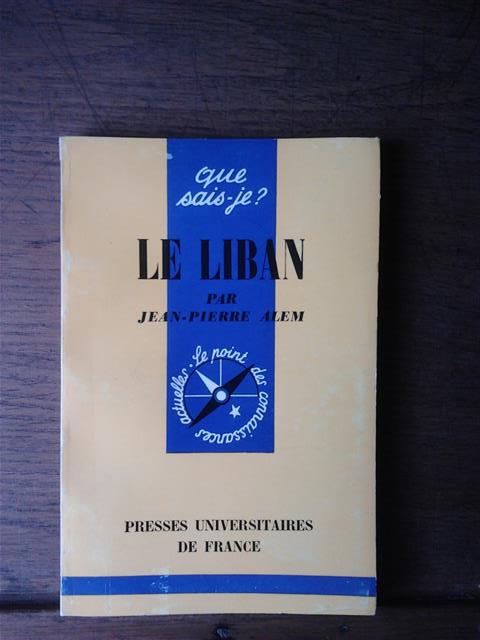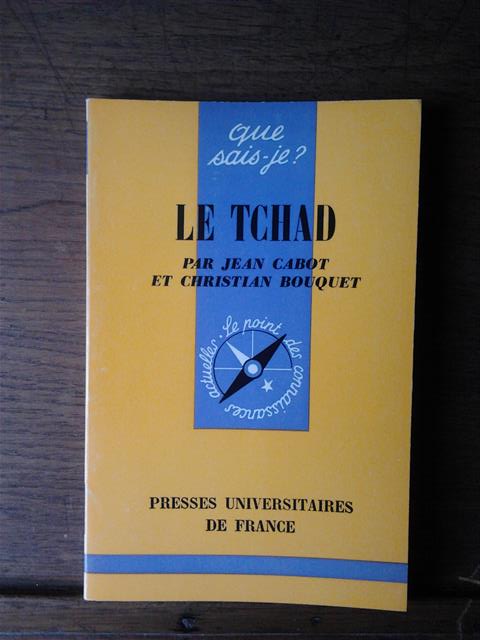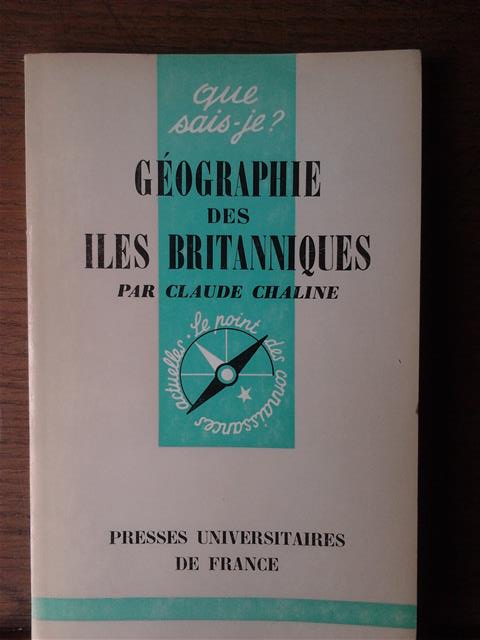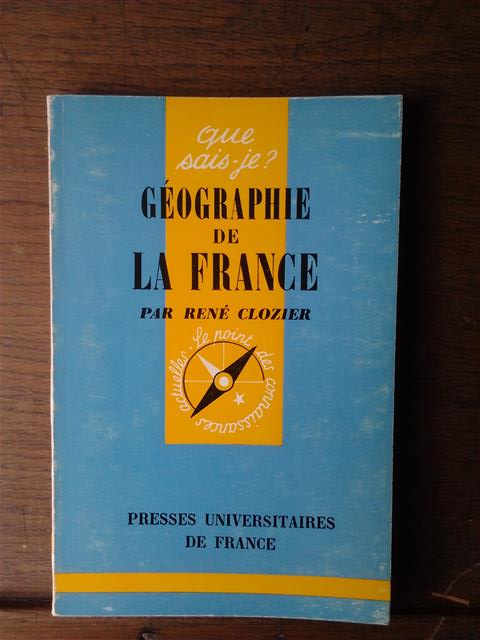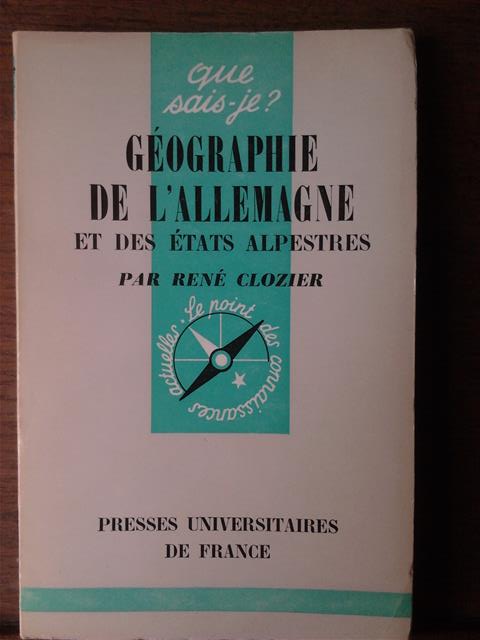



Search
Search our 7.940 News Items
CATEGORIES
We found 106 books in our category 'GEOGRAPHY'
We found 2 news items
We found 106 books
Le Liban
Pocket, Que sais-je?
ALEM Jean-Pierre@ wikipedia
€ 5.0

Liège
Dessain
1903
BEL 
condition: Edgewear. Couverture défraichie. Good.
book number: 19030012
La Belgique pittoresque. Géographie descriptive. Physique, politique, économique et historique.
Softcover, couverture originale, grand in-8, 384 pp. Illustré de nombreuses photos, cartes et gravures en NB.
ALEXIS F. M.G.@ wikipedia
€ 10.0

Toen & NU Steden. De grote steden van de wereld herleven in levensechte doorkijkreconstructies. Zoals ze nu zijn - zoals ze vroeger waren.
Hardcover, ringen, 410 pp, 143 pp, geïllustreerd in kleur
ANTONIOU Jim@ wikipedia
€ 10.0

Hout in alle tijden. deel 3. Bossen, bomen en hout van thans; de voornaamste bostypen en houtsoorten der wereld.
Hardcover, grote in-8, 800 pp., foto's in ZW (ook microfotografie), index. Referentiewerk inzake dendrologie. Dit deel bevat de besprekingen per land (bosareaal, etc.)
BOERHAVE BEEKMAN W.@ wikipedia
€ 25.0

L'Iran moderne
Pocket, Que sais-je?
BOISSEL Jean@ wikipedia
€ 10.0
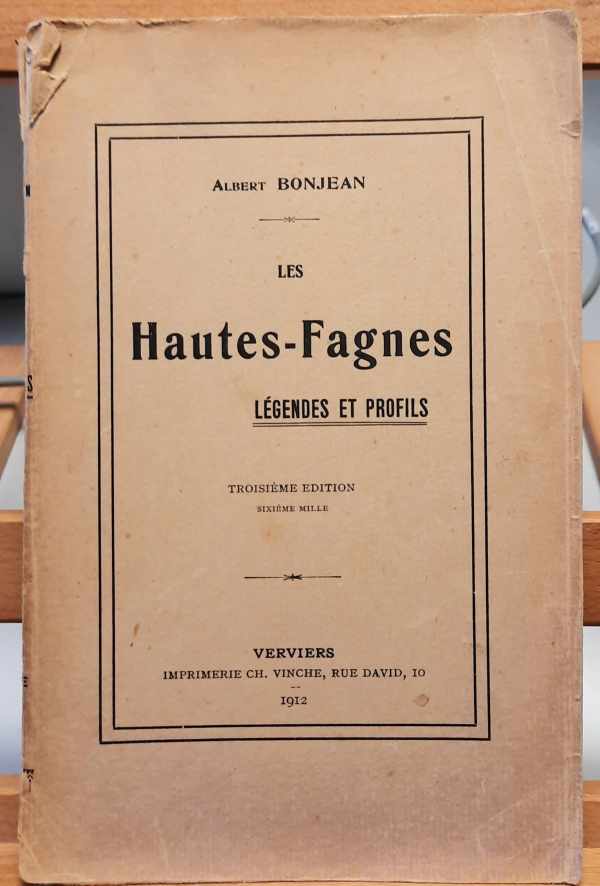
Verviers
Vinche
1912
BEL 
condition: Etat raisonable
book number: 202402081622
Les Hautes-Fagnes. Légendes et profiles, autour de la Baraque Michel
3ième édition. Softcover, in-8, ill.
Entre landes et tourbières, forêts et rivières, lacs de barrages et villages pittoresques, le Parc naturel Hautes Fagnes-Eifel offre une remarquable palette de paysages dignes des plus belles cartes postales, à moins d’une heure de Liège. Le Parc est divisé en différentes régions.
Au nord-ouest s’étend l’Avant-Pays Fagnard. Des forêts, des collines doucement ondulées et de vastes prairies où paissent les vaches laitières confèrent aux contreforts de l’Eifel un charme incontesté.
Une fois la « déclivité fagnarde » franchie, on atteint le Plateau des Hautes Fagnes, la région la plus élevée de Belgique. Ses sommets culminent à 672 m (Baraque Michel) et à 694 mètre (Botrange). Ici, la forêt fait place à une vaste étendue dégagée, domaine de tourbières uniques en Europe entrecoupée de landes. Ce vaste paysage ouvert constitue la plus grande réserve naturelle du pays.
Puis, au sud, il y a la Haute Eifel avec ses hautes collines boisées, ses lacs de barrage et la pittoresque Vallée de l’Our.
Entre landes et tourbières, forêts et rivières, lacs de barrages et villages pittoresques, le Parc naturel Hautes Fagnes-Eifel offre une remarquable palette de paysages dignes des plus belles cartes postales, à moins d’une heure de Liège. Le Parc est divisé en différentes régions.
Au nord-ouest s’étend l’Avant-Pays Fagnard. Des forêts, des collines doucement ondulées et de vastes prairies où paissent les vaches laitières confèrent aux contreforts de l’Eifel un charme incontesté.
Une fois la « déclivité fagnarde » franchie, on atteint le Plateau des Hautes Fagnes, la région la plus élevée de Belgique. Ses sommets culminent à 672 m (Baraque Michel) et à 694 mètre (Botrange). Ici, la forêt fait place à une vaste étendue dégagée, domaine de tourbières uniques en Europe entrecoupée de landes. Ce vaste paysage ouvert constitue la plus grande réserve naturelle du pays.
Puis, au sud, il y a la Haute Eifel avec ses hautes collines boisées, ses lacs de barrage et la pittoresque Vallée de l’Our.
BONJEAN Albert@ wikipedia
€ 12.5

Hoog boven België. Luchtfoto's van steden, dorpen en landschappen.
Hardcover, linnen, stofwikkel, gebonden, large 4to, 144 pp., rijkelijk geïllustreerd in kleur en ZW, gesigneerd
BRIELS Jo (tekst), PHILIPPE Daniel (foto's)@ wikipedia
€ 20.0
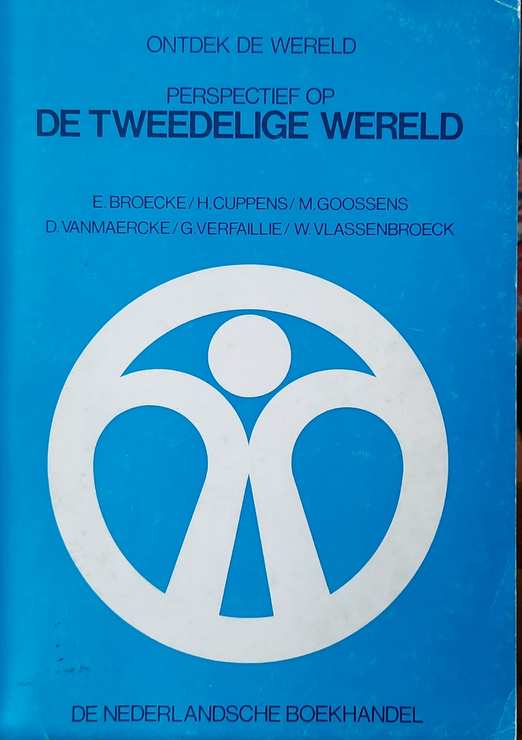
Kapellen
De Nederlandsche Boekhandel
1980
BEL 
condition: Very good
book number: 36310
Perspectief op De Tweeledige Wereld.
Softcover, pb, 4to, 205 pp., geïllustreerd
BROECKE, CUPPENS, GOOSSENS, VANMAERKE, VLASSENBROECK, VERFAILLIE ( cartografie: F. DEPUYDT)@ wikipedia
€ 10.0

Goes
De Koperen Tuin
1995
NLD 
condition: Very good
book number: 19950163
De Zak in vogelvlucht. Borsele: land van dijken en welen.
Hardcover, 4to, 86 pp., geïllustreerde schutbladen, foto's (ook luchtfotografie), (kadastrale) kaartjes in ZW, met bibliografie. De gemeente Borsele wordt in het Noorden begrensd door de A58, in het Zuiden door de Westerschelde. De 'Zak' staat voor een landschap met boomrijke dijken en meidoornhagen. Interessante studie rond het ontstaan en de geometrie van dorpen, polders en bedijking.
BRUIJNS Jan, KUIPERS Jan J.B., DE RUITER Jan@ wikipedia
€ 10.0

Den Haag/Amsterdam
M. Tokkie jr Boek- en Kunsthandel
1881
INT 
condition: Gewone slijtage. Very good/Très bel état/Sehr gut/Zeer goed
book number: 18810002
Landen en volken der aarde
Hardcover/romantische linnen band. 23x16cm. Drie delen in één band: 267 pp. + 253 pp. + 20 tabellen + 298 p., 473 gravures en kaarten. Noot LT: dit boek behandelt uitvoerig alle werelddelen en landen, het universalisme en de ontegensprekelijke culturele dominantie van Europa is een opmerkelijk kenmerk van de periode 1880-1914; het boek, duidelijk gericht op de upper class, getuigt hiervan
BRUINS F.@ wikipedia
€ 35.0

Amsterdam
Prometheus
1993
NLD 
condition: Very good
book number: 19930241
Holland Houtland. Een geschiedenis van het Nederlandse bos.
Pb, in-8, 243 pp., geen illustraties, verklarende woordenlijst, chronologie (algemeen, bosbouwkundig, juridisch), bibliografie, register. Noot LT: Dit boek overtuigt niet en vertoont lacunes (periode Willem I, Belgische onafhankelijkheid onvermeld, rol amortisatiesyndikaat onderbelicht). In de bibliografie missen we het werk van Blink. Niet meer dan een inleiding of een samenvatting van zijn proefschrift Historia Forestis.
BUIS Jaap@ wikipedia
€ 15.0

Utrecht
HES Uitgevers
1985
NLD 
condition: Kleine beschadiging aan de cover van het eerste deel. Voor het overige zeer goed.
book number: 19850203
Historia forestis: Nederlandse bosgeschiedenis (twee delen = volledig!)
HES Studia Historica XIV. Paperback, 1058 pp. (doorpaginering over de 2 delen). Deel 1: Bosgebruik, bosbeheer en boswetgeving tot het midden van de negentiende eeuw. Deel 2: Houtmarkt en houtteelt tot het midden van de negentiende eeuw. Met bibliografische noten, bibliografie, zakenregister, plaatsnamenregister, personenregister.
BUIS Jaap@ wikipedia
€ 55.0

Luneray
Bertout
1994
FRA 
condition: As new/comme neuf/wie neu/als nieuw
book number: 18790009
GEOGRAPHIE du DEPARTEMENT de la SEINE-INFERIEURE. Ouvrage posthume, continué et publié par l'abbé A. Tougard. ARRONDISSEMENT de Rouen.
Reprint/réimpression. Broché, in-8, xxiii + 491 pp., index
BUNEL J. (Abbé -), TOUGARD A. (abbé -)@ wikipedia
€ 30.0
Le Tchad
Pocket, Que sais-je?
CABOT & BOUQUET@ wikipedia
€ 5.0
Géographie des Iles Britanniques
Pocket, Que sais-je?
CHALINE Claude@ wikipedia
€ 10.0
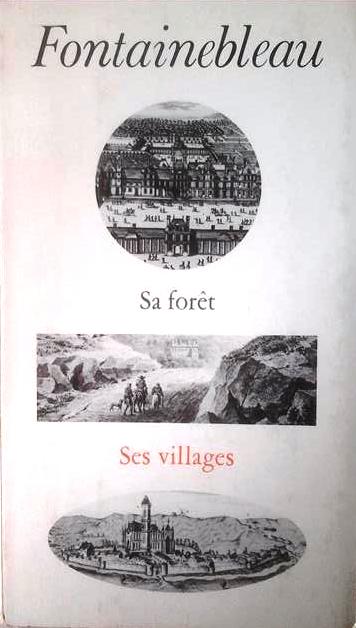
Paris
Les Libraires Associés
1965
FRA 
condition: Very good
book number: 19650094
Promenades dans Fontainebleau, sa Forêt, ses villages
Broché, petit in-8, cartonnage editeur, 307 pp., illustrations, grande carte dépliante, régistres. Guide inédit comportant une anthologie des textes historiques et littéraires inspirés par le château et la ville, l'école de Fontainebleau, la forêt, les villages, les peintres de Barbizon, illustré d'estampes anciennes, de plans, de peintures et des premières photographies des fresques restaurées de la galerie François Ier, accompagné d'une carte de la forêt spécialement mise à jour et realisée par l'Institut géographique national.
'C'est Pie VII qui y séjourna le plus longtemps. D'abord en novembre 1804 lorsqu'il vint en France pour le sacré de l'empereur (Napoléon, LT) à Notre-Dame de Paris, puis surtout lors du séjour forcé qu'il dut accomplir à Fontainebleau, surveillé par une garde qui, par ordre, le traitait avec la plus respectueuse fermeté (20 juin 1812 - 26 janvier 1814).' (135)
Sur le forêt: 'Ses frontières sont ponctuées de villes, de villages, de hameaux qui participent à la forêt: Melun, Bois-le-Roi, Samois, Thomery, Moret, Montigny, Marlotte, Bourron, Nemours, Poligny, Puiselet, Larchant, Recloses, Achères, Boissy-aux-Cailles, Le Vaudoué, Milly, Arbonne, Barbizon sont les principales agglomérations qui marquent les limites du paysage forestier.' (177)
'C'est Pie VII qui y séjourna le plus longtemps. D'abord en novembre 1804 lorsqu'il vint en France pour le sacré de l'empereur (Napoléon, LT) à Notre-Dame de Paris, puis surtout lors du séjour forcé qu'il dut accomplir à Fontainebleau, surveillé par une garde qui, par ordre, le traitait avec la plus respectueuse fermeté (20 juin 1812 - 26 janvier 1814).' (135)
Sur le forêt: 'Ses frontières sont ponctuées de villes, de villages, de hameaux qui participent à la forêt: Melun, Bois-le-Roi, Samois, Thomery, Moret, Montigny, Marlotte, Bourron, Nemours, Poligny, Puiselet, Larchant, Recloses, Achères, Boissy-aux-Cailles, Le Vaudoué, Milly, Arbonne, Barbizon sont les principales agglomérations qui marquent les limites du paysage forestier.' (177)
CHAMPIGNEULLE Bernard@ wikipedia
€ 25.0

Paris/Bruxelles
Librairie Hachette/Editions Hachette.
1924
BEL 
condition: Owners name. Notes en crayon. Texte en bon état - tranche et couverture en état d'usage avec dos, bords et coins frottés.
book number: 19240005
La Belgique - Le Congo Belge
1 vol. petit in-8 , cartonné, editeur, 332 pp. Ouvrage contenant 164 gravures et cartes Classes de 4e des Athénées - 3e année des écoles moyennes - écoles normales.
CHOT & GALLOUEDEC & MAURETTE@ wikipedia
€ 10.0
Géographie de la France
Pocket, Que sais-je?
CLOZIER@ wikipedia
€ 5.0
Géographie de l'Allemagne et des Etats Alpestres
Pocket, Que sais-je?
CLOZIER René@ wikipedia
€ 10.0

Paris
Hachette
1884
INT 
condition: Goed/Bon état/Good/Gut
book number: 18840001
Moeurs et caractères des peuples (Europe - Afrique). Morceaux extraits de divers auteurs.
2ème. édition, later binding, VIII + 290 pp. Avec des gravures. Le type français, le Parisien, les pauvres de Londres, le Hollandais, la femme allemande, parures des Chillouk, les Ouanyamouézi etc. etc. Textes de Cameron, Livingstone, Stanley, Thomas Baines, Fleuriot de Langle, Ida Pfeiffer. Note LT: L'auteur était le Secrétaire honoraire de la Société de Géographie, attaché à la Bibliothèque Nationale.
CORTAMBERT, R.@ wikipedia
€ 30.0
We found 2 news items
Hydrography and Navigation on the Congo River - A Century of Visual History
ID: 202404180038
A unique insight into the Congo River from the 20th century history of Land- and Hydrographic Survey.
Details the geography of the interaction between streamflow, island creation and destruction.
Develops an innovative proposal to build a 21st century container terminal for the entire Central African continent.
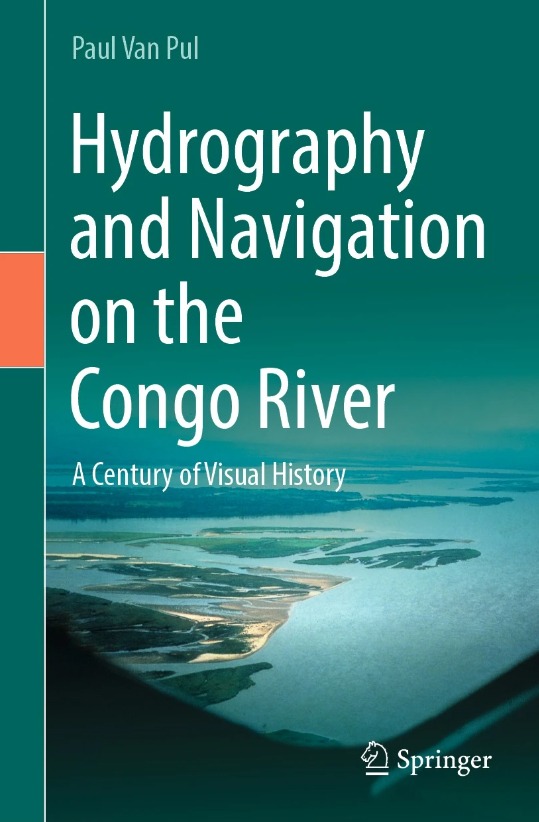
In a time without GPS and echosounder, European engineers and black labourers worked for decades to get a better understanding of the nautical intricacies of the Congo River. This is the first comprehensive story, in text and custom-made maps, of the, in flow, second largest river in the world. We follow the earliest explorers mapping the river, the expeditions to find an alternative access to the ocean and the first land and hydraulic surveys to improve navigation. The constant movement of shallows and islands keeps the guardians of the river constantly on their toes. Over the years, better technologies on all fronts improved safety, data collection and fairway maintenance. In conclusion, the author describes a proposal to develop a 21st container port that would rival any port facilities on the African west coast.
Hardcover. Price 148.39 EUR
The author, a Belgian Land Surveyor, has a lifelong, technical affiliation with rivers. First as a teenager cruising on the Dutch Waterways and later investigating and publishing about the post-war expansion of the Port of Antwerp-Bruges, his hometown. Even since living in Canada, he did not give up on his Low Countries roots. His first books concerned inundating large tracts of land to stop an invading army — a very appropriate subject in today’s geopolitical environment. His latest book told the story of a failed attempt to build the first hydropower dam in his adopted Canadian Province of Saskatchewan. With this new project, he returns to Belgium and its once colony, now the Democratic Republic of the Congo. He analyses a century of hydraulic research and navigation in Central Africa. With his knack for drafting, the story brims with custom-made maps and charts depicting the evolution of water transport in the Congo River basin. Along the way, he tells the forgotten story of how the Congo almost became a land-locked country and, with his lifelong knowledge of Historic River Engineering, he even proposes a plan to vastly enhance the nautical access to this great and promising African country.
Details the geography of the interaction between streamflow, island creation and destruction.
Develops an innovative proposal to build a 21st century container terminal for the entire Central African continent.

In a time without GPS and echosounder, European engineers and black labourers worked for decades to get a better understanding of the nautical intricacies of the Congo River. This is the first comprehensive story, in text and custom-made maps, of the, in flow, second largest river in the world. We follow the earliest explorers mapping the river, the expeditions to find an alternative access to the ocean and the first land and hydraulic surveys to improve navigation. The constant movement of shallows and islands keeps the guardians of the river constantly on their toes. Over the years, better technologies on all fronts improved safety, data collection and fairway maintenance. In conclusion, the author describes a proposal to develop a 21st container port that would rival any port facilities on the African west coast.
Hardcover. Price 148.39 EUR
The author, a Belgian Land Surveyor, has a lifelong, technical affiliation with rivers. First as a teenager cruising on the Dutch Waterways and later investigating and publishing about the post-war expansion of the Port of Antwerp-Bruges, his hometown. Even since living in Canada, he did not give up on his Low Countries roots. His first books concerned inundating large tracts of land to stop an invading army — a very appropriate subject in today’s geopolitical environment. His latest book told the story of a failed attempt to build the first hydropower dam in his adopted Canadian Province of Saskatchewan. With this new project, he returns to Belgium and its once colony, now the Democratic Republic of the Congo. He analyses a century of hydraulic research and navigation in Central Africa. With his knack for drafting, the story brims with custom-made maps and charts depicting the evolution of water transport in the Congo River basin. Along the way, he tells the forgotten story of how the Congo almost became a land-locked country and, with his lifelong knowledge of Historic River Engineering, he even proposes a plan to vastly enhance the nautical access to this great and promising African country.
Land: COD

18-24 april 1955: Bandung Conference
ID: 195504180861
From Wikipedia, the free encyclopedia
Jump to navigationJump to search
This article needs additional citations for verification. Please help improve this article by adding citations to reliable sources. Unsourced material may be challenged and removed.
Find sources: "Bandung Conference" – news · newspapers · books · scholar · JSTOR (April 2012) (Learn how and when to remove this template message)
The venue in 1955
The building in 2007; now it is a museum of the conference
The first large-scale Asian–African or Afro–Asian Conference—also known as the Bandung Conference (Indonesian: Konferensi Asia-Afrika)—was a meeting of Asian and African states, most of which were newly independent, which took place on 18-24 April 1955 in Bandung, Indonesia. The twenty-nine countries that participated at the Bandung Conference represented nearly one-quarter of the Earth's land surface and a total population of 1.5 billion people, roughly 54% of the Earth's population at the time.[1][2] The conference was organised by Indonesia, Burma (Myanmar), Pakistan, Ceylon (Sri Lanka), and India and was coordinated by Ruslan Abdulgani, secretary general of the Indonesian Ministry of Foreign Affairs.
The conference's stated aims were to promote Afro-Asian economic and cultural cooperation and to oppose colonialism or neocolonialism by any nation. The conference was an important step toward the Non-Aligned Movement.
In 2005, on the 50th anniversary of the original conference, leaders from Asian and African countries met in Jakarta and Bandung to launch the New Asian-African Strategic Partnership (NAASP). They pledged to promote political, economic, and cultural cooperation between the two continents.
Contents
1 Background
2 Discussion
3 Participants
4 Declaration
5 United States involvement
6 Outcome and legacy
6.1 Asian-African Summit of 2005
6.2 Other anniversaries
7 See also
8 References
8.1 Bibliography
9 Further reading
10 External links
Background
The conference of Bandung was preceded by the Bogor Conference (1949). The Bogor Conference was the seed for the Colombo Plan and Bandung Conference. The 2nd Bogor Conference was held 28-29 December 1954.[3]
The Bandung Conference reflected what the organisers regarded as a reluctance by the Western powers to consult with them on decisions affecting Asia in a setting of Cold War tensions; their concern over tension between the People's Republic of China and the United States; their desire to lay firmer foundations for China's peace relations with themselves and the West; their opposition to colonialism, especially French influence in North Africa and its colonial rule in Algeria; and Indonesia's desire to promote its case in the dispute with the Netherlands over western New Guinea (Irian Barat).
Sukarno, the first president of the Republic of Indonesia, portrayed himself as the leader of this group of states, which he later described as "NEFOS" (Newly Emerging Forces).[4] His daughter, Megawati Sukarnoputri headed the PDI-P party during both summit anniversaries, and the President of Indonesia Joko Widodo during the 3rd summit was a member of her party.
On 4 December 1954 the United Nations announced that Indonesia had successfully gotten the issue of West New Guinea placed on the agenda of the 1955 General Assembly,[5] plans for the Bandung conference were announced in December 1954.[6]
Discussion
Plenary hall of the conference building
Major debate centered around the question of whether Soviet policies in Eastern Europe and Central Asia should be censured along with Western colonialism. A memo was submitted by 'The Moslem Nations under Soviet Imperialism', accusing the Soviet authorities of massacres and mass deportations in Muslim regions, but it was never debated.[7] A consensus was reached in which "colonialism in all of its manifestations" was condemned, implicitly censuring the Soviet Union, as well as the West.[8] China played an important role in the conference and strengthened its relations with other Asian nations. Having survived an assassination attempt on the way to the conference, the Chinese premier, Zhou Enlai, displayed a moderate and conciliatory attitude that tended to quiet fears of some anticommunist delegates concerning China's intentions.
Later in the conference, Zhou Enlai signed on to the article in the concluding declaration stating that overseas Chinese owed primary loyalty to their home nation, rather than to China – a highly sensitive issue for both his Indonesian hosts and for several other participating countries. Zhou also signed an agreement on dual nationality with Indonesian foreign minister Sunario.
Participants
Countries represented in the Asia-Africa Conference in Bandung, Indonesia in 1955. Twenty-nine independent countries were present, representing over half the world's population. Vietnam is represented twice by both North Vietnam and the State of Vietnam, which became South Vietnam.
Member states of the Non-Aligned Movement (2012). Light blue states have observer status.
Afghanistan Kingdom of Afghanistan
Burma
Cambodia Kingdom of Cambodia
Dominion of Ceylon
People's Republic of China
Cyprus1
Egypt Republic of Egypt
Ethiopian Empire
Gold Coast
India
Indonesia
Iran Iran
Kingdom of Iraq
Japan
Jordan
Laos Kingdom of Laos
Lebanon
Liberia
Libya Kingdom of Libya
Nepal Kingdom of Nepal
Dominion of Pakistan
Philippines
Saudi Arabia
Syria Syrian Republic
Sudan Republic of the Sudan
Thailand
Turkey
South Vietnam State of Vietnam
Democratic Republic of Vietnam
Yemen Mutawakkilite Kingdom of Yemen
1 A pre-independent colonial Cyprus was represented by [the] eventual first president, Makarios III.[9]
Some nations were given "observer status". Such was the case of Brazil, who sent Ambassador Bezerra de Menezes.
Declaration
A 10-point "declaration on promotion of world peace and cooperation," incorporating the principles of the United Nations Charter was adopted unanimously:
Respect for fundamental human rights and for the purposes and principles of the charter of the United Nations
Respect for the sovereignty and territorial integrity of all nations
Recognition of the equality of all races and of the equality of all nations large and small
Abstention from intervention or interference in the internal affairs of another country
Respect for the right of each nation to defend itself, singly or collectively, in conformity with the charter of the United Nations
(a) Abstention from the use of arrangements of collective defence to serve any particular interests of the big powers
(b) Abstention by any country from exerting pressures on other countries
Refraining from acts or threats of aggression or the use of force against the territorial integrity or political independence of any country
Settlement of all international disputes by peaceful means, such as negotiation, conciliation, arbitration or judicial settlement as well as other peaceful means of the parties own choice, in conformity with the charter of the United Nations
Promotion of mutual interests and cooperation
Respect for justice and international obligations.[10]
The final Communique of the Conference underscored the need for developing countries to loosen their economic dependence on the leading industrialised nations by providing technical assistance to one another through the exchange of experts and technical assistance for developmental projects, as well as the exchange of technological know-how and the establishment of regional training and research institutes.
United States involvement
For the US, the Conference accentuated a central dilemma of its Cold War policy: by currying favor with Third World nations by claiming opposition to colonialism, it risked alienating its colonialist European allies.[11] The US security establishment also feared that the Conference would expand China's regional power.[12] In January 1955 the US formed a "Working Group on the Afro-Asian Conference" which included the Operations Coordinating Board (OCB), the Office of Intelligence Research (OIR), the Department of State, the Department of Defense, the Central Intelligence Agency (CIA), and the United States Information Agency (USIA).[13] The OIR and USIA followed a course of "Image Management" for the US, using overt and covert propaganda to portray the US as friendly and to warn participants of the Communist menace.[14]
The United States, at the urging of Secretary of State John Foster Dulles, shunned the conference and was not officially represented. However, the administration issued a series of statements during the lead-up to the Conference. These suggested that the US would provide economic aid, and attempted to reframe the issue of colonialism as a threat by China and the Eastern Bloc.[15]
Representative Adam Clayton Powell, Jr. (D-N.Y.) attended the conference, sponsored by Ebony and Jet magazines instead of the U.S. government.[15] Powell spoke at some length in favor of American foreign policy there which assisted the United States's standing with the Non-Aligned. When Powell returned to the United States, he urged President Dwight D. Eisenhower and Congress to oppose colonialism and pay attention to the priorities of emerging Third World nations.[16]
African American author Richard Wright attended the conference with funding from the Congress for Cultural Freedom. Wright spent about three weeks in Indonesia, devoting a week to attending the conference and the rest of his time to interacting with Indonesian artists and intellectuals in preparation to write several articles and a book on his trip to Indonesia and attendance at the conference. Wright's essays on the trip appeared in several Congress for Cultural Freedom magazines, and his book on the trip was published as The Color Curtain: A Report on the Bandung Conference. Several of the artists and intellectuals with whom Wright interacted (including Mochtar Lubis, Asrul Sani, Sitor Situmorang, and Beb Vuyk) continued discussing Wright's visit after he left Indonesia.[17][18]
Outcome and legacy
The conference was followed by the Afro-Asian People's Solidarity Conference in Cairo[19] in September (1957) and the Belgrade Conference (1961), which led to the establishment of the Non-Aligned Movement.[20] In later years, conflicts between the nonaligned nations eroded the solidarity expressed at Bandung.
Asian-African Summit of 2005
To mark the 50th anniversary of The Summit, Heads of State and Government of Asian-African countries attended a new Asian-African Summit from 20–24 April 2005 in Bandung and Jakarta. Some sessions of the new conference took place in Gedung Merdeka (Independence Building), the venue of the original conference. Of the 106 nations invited to the historic summit, 89 were represented by their heads of state or government or ministers.[3] The Summit was attended by 54 Asian and 52 African countries.
The 2005 Asian African Summit yielded, inter-alia, the Declaration of the New Asian–African Strategic Partnership (NAASP),[21] the Joint Ministerial Statement on the NAASP Plan of Action, and the Joint Asian African Leaders’ Statement on Tsunami, Earthquake and other Natural Disasters. The conclusion of aforementioned declaration of NAASP is the Nawasila (nine principles) supporting political, economic, and socio-cultural cooperation.
The Summit concluded a follow-up mechanism for institutionalization process in the form of Summit concurrent with Business Summit every four years, Ministerial Meeting every two years, and Sectoral Ministerial as well as Technical Meeting if deemed necessary.
Other anniversaries
On the 60th anniversary of the Asian-African Conference and the 10th anniversary of the NAASP, a 3rd summit was held in Bandung and Jakarta from 21–25 April 2015, with the theme Strengthening South-South Cooperation to Promote World Peace and Prosperity. Delegates from 109 Asian and African countries, 16 observer countries and 25 international organizations participated.[3]
See also
Asian–African Legal Consultative Organization
Five Principles of Peaceful Coexistence
Sino-Indonesian Dual Nationality Treaty
Third World
References
geographer, Matt Rosenberg Matt Rosenberg is a professional; book, writer with over 20 years of experience He is the author of both a geography reference; contests, a guide to winning National Geography Bee. "Current World Population and Future Projections". ThoughtCo. Retrieved 10 February 2019.
Bandung Conference of 1955 and the resurgence of Asia and Africa Archived 13 May 2012 at the Wayback Machine, Daily News, Sri Lanka
"Asian-African Conference timeline". The Jakarta Post. Retrieved 8 September 2017.
Cowie, H.R. (1993). Australia and Asia. A changing Relationship, 18.
United Nations General Assembly, Report of the First Committee A/2831
Parker, "Small Victory, Missed Chance" (2006), p. 156.
Schindler, Colin (2012). Israel and the European Left. New York: Continuum. p. 205. ISBN 978-1441150134.
"Bandung Conference - Asia-Africa [1955]". Encyclopedia Britannica. Retrieved 10 February 2019.
Cyprus and the Non–Aligned Movement Archived 2016-03-03 at the Wayback Machine, Ministry of Foreign Affairs, (April, 2008)
Jayaprakash, N D (June 5, 2005). "India and the Bandung Conference of 1955 – II". People's Democracy – Weekly Organ of the Communist Party of India (Marxist). XXIX (23). Archived from the original on 11 March 2007. Retrieved 2007-02-07.
Parker, "Small Victory, Missed Chance" (2006), p. 154. "... Bandung presented Washington with a geopolitical quandary. Holding the Cold War line against communism depended on the crumbling European empires. Yet U.S. support for that ancien régime was sure to earn the resentment of Third World nationalists fighting against colonial rule. The Eastern Bloc, facing no such guilt by association, thus did not face the choice Bandung presented to the United States: side with the rising Third World tide, or side with the shaky imperial structures damming it in."
Parker, "Small Victory, Missed Chance" (2006), p. 155.
Parker, "Small Victory, Missed Chance" (2006), pp. 157–158.
Parker, "Small Victory, Missed Chance" (2006), p. 161. "An OCB memorandum of March 28 [...] recounts the efforts by OIR and the working group to distribute intelligence 'on Communist intentions, and [on] suggestions for countering Communist designs.' These were sent to U.S. posts overseas, with instructions to confer with invitee governments, and to brief friendly attendees. Among the latter, 'efforts will be made to exploit [the Bangkok message] through the Thai, Pakistani, and Philippine delegations.' Posts in Japan and Turkey would seek to do likewise. On the media front, the administration briefed members of the American press; '[this] appear[s] to have been instrumental in setting the public tone.' Arrangements had also been made for USIA coverage. In addition, the document refers to budding Anglo-American collaboration in the 'Image Management' effort surrounding Bandung."
Parker, "Small Victory, Missed Chance" (2006), p. 162.
"Adam Clayton Powell Jr". United States House of Representatives. Retrieved February 1, 2015.
Roberts, Brian Russell (2013). Artistic Ambassadors: Literary and International Representation of the New Negro Era. Charlottesville: University of Virginia Press. pp. 146–172. ISBN 0813933684.
Roberts, Brian Russell; Foulcher, Keith (2016). Indonesian Notebook: A Sourcebook on Richard Wright and the Bandung Conference. Durham: Duke University Press. ISBN 0822360667.
Mancall, Mark. 1984. China at the Center. p. 427
Nazli Choucri, "The Nonalignment of Afro-Asian States: Policy, Perception, and Behaviour", Canadian Journal of Political Science / Revue canadienne de science politique, Vol. 2, No. 1.(Mar., 1969), pp. 1-17.
"Seniors official meeting" (PDF). MFA of Indonesia. Retrieved 2012-10-01.
Bibliography
Parker, Jason C. "Small Victory, Missed Chance: The Eisenhower Administration, the Bandung Conference, and the Turning of the Cold War." In The Eisenhower Administration, the Third World, and the Globalization of the Cold War. Ed. Kathryn C. Statler & Andrew L. Johns. Lanham, MD: Rowman & Littlefield, 2006. ISBN 0742553817
Further reading
Asia-Africa Speaks From Bandung. Jakarta: Ministry of Foreign Affairs, Republic of Indonesia, 1955.
Ampiah, Kweku. The Political and Moral Imperatives of the Bandung Conference of 1955 : the Reactions of the US, UK and Japan. Folkestone, UK : Global Oriental, 2007. ISBN 1-905246-40-4
Brown, Colin. 2012. "The Bandung Conference and Indonesian Foreign Policy", Ch 9 in Anne Booth, Chris Manning and Thee Kian Wie, 2012, Essays in Honour of Joan Hardjono, Jakarta: Yayasan Pustaka Obor Indonesia.
Dinkel, Jürgen, The Non-Aligned Movement. Genesis, Organization and Politics (1927-1992), New Perspectives on the Cold War 5, Brill: Leiden/Boston 2019. ISBN:978-90-04-33613-1
Kahin, George McTurnan. The Asian-African Conference: Bandung, Indonesia, April 1955. Ithaca: Cornell University Press, 1956.
Lee, Christopher J., ed, Making a World After Empire: The Bandung Moment and Its Political Afterlives. Athens, OH: Ohio University Press, 2010. ISBN 978-0896802773
Mackie, Jamie. Bandung 1955: Non-Alignment and Afro-Asian Solidarity. Singapore: Editions Didier Millet, 2005. ISBN 981-4155-49-7
Finnane, Antonia, and Derek McDougall, eds, Bandung 1955: Little Histories. Melbourne: Monash Asia Institute, 2010. ISBN 978-1-876924-73-7
External links
Modern History Sourcebook: Prime Minister Nehru: Speech to Asian-African Conference Political Committee, 1955
Modern History Sourcebook: President Sukarno of Indonesia: Speech at the Opening of the Asian-African Conference, 18 April 1955
"Asian-African Conference: Communiqué; Excerpts" (PDF). Egyptian presidency website. 24 April 1955. Archived from the original (PDF) on 2011-04-23. Retrieved 23 April 2011.
Jump to navigationJump to search
This article needs additional citations for verification. Please help improve this article by adding citations to reliable sources. Unsourced material may be challenged and removed.
Find sources: "Bandung Conference" – news · newspapers · books · scholar · JSTOR (April 2012) (Learn how and when to remove this template message)
The venue in 1955
The building in 2007; now it is a museum of the conference
The first large-scale Asian–African or Afro–Asian Conference—also known as the Bandung Conference (Indonesian: Konferensi Asia-Afrika)—was a meeting of Asian and African states, most of which were newly independent, which took place on 18-24 April 1955 in Bandung, Indonesia. The twenty-nine countries that participated at the Bandung Conference represented nearly one-quarter of the Earth's land surface and a total population of 1.5 billion people, roughly 54% of the Earth's population at the time.[1][2] The conference was organised by Indonesia, Burma (Myanmar), Pakistan, Ceylon (Sri Lanka), and India and was coordinated by Ruslan Abdulgani, secretary general of the Indonesian Ministry of Foreign Affairs.
The conference's stated aims were to promote Afro-Asian economic and cultural cooperation and to oppose colonialism or neocolonialism by any nation. The conference was an important step toward the Non-Aligned Movement.
In 2005, on the 50th anniversary of the original conference, leaders from Asian and African countries met in Jakarta and Bandung to launch the New Asian-African Strategic Partnership (NAASP). They pledged to promote political, economic, and cultural cooperation between the two continents.
Contents
1 Background
2 Discussion
3 Participants
4 Declaration
5 United States involvement
6 Outcome and legacy
6.1 Asian-African Summit of 2005
6.2 Other anniversaries
7 See also
8 References
8.1 Bibliography
9 Further reading
10 External links
Background
The conference of Bandung was preceded by the Bogor Conference (1949). The Bogor Conference was the seed for the Colombo Plan and Bandung Conference. The 2nd Bogor Conference was held 28-29 December 1954.[3]
The Bandung Conference reflected what the organisers regarded as a reluctance by the Western powers to consult with them on decisions affecting Asia in a setting of Cold War tensions; their concern over tension between the People's Republic of China and the United States; their desire to lay firmer foundations for China's peace relations with themselves and the West; their opposition to colonialism, especially French influence in North Africa and its colonial rule in Algeria; and Indonesia's desire to promote its case in the dispute with the Netherlands over western New Guinea (Irian Barat).
Sukarno, the first president of the Republic of Indonesia, portrayed himself as the leader of this group of states, which he later described as "NEFOS" (Newly Emerging Forces).[4] His daughter, Megawati Sukarnoputri headed the PDI-P party during both summit anniversaries, and the President of Indonesia Joko Widodo during the 3rd summit was a member of her party.
On 4 December 1954 the United Nations announced that Indonesia had successfully gotten the issue of West New Guinea placed on the agenda of the 1955 General Assembly,[5] plans for the Bandung conference were announced in December 1954.[6]
Discussion
Plenary hall of the conference building
Major debate centered around the question of whether Soviet policies in Eastern Europe and Central Asia should be censured along with Western colonialism. A memo was submitted by 'The Moslem Nations under Soviet Imperialism', accusing the Soviet authorities of massacres and mass deportations in Muslim regions, but it was never debated.[7] A consensus was reached in which "colonialism in all of its manifestations" was condemned, implicitly censuring the Soviet Union, as well as the West.[8] China played an important role in the conference and strengthened its relations with other Asian nations. Having survived an assassination attempt on the way to the conference, the Chinese premier, Zhou Enlai, displayed a moderate and conciliatory attitude that tended to quiet fears of some anticommunist delegates concerning China's intentions.
Later in the conference, Zhou Enlai signed on to the article in the concluding declaration stating that overseas Chinese owed primary loyalty to their home nation, rather than to China – a highly sensitive issue for both his Indonesian hosts and for several other participating countries. Zhou also signed an agreement on dual nationality with Indonesian foreign minister Sunario.
Participants
Countries represented in the Asia-Africa Conference in Bandung, Indonesia in 1955. Twenty-nine independent countries were present, representing over half the world's population. Vietnam is represented twice by both North Vietnam and the State of Vietnam, which became South Vietnam.
Member states of the Non-Aligned Movement (2012). Light blue states have observer status.
Afghanistan Kingdom of Afghanistan
Burma
Cambodia Kingdom of Cambodia
Dominion of Ceylon
People's Republic of China
Cyprus1
Egypt Republic of Egypt
Ethiopian Empire
Gold Coast
India
Indonesia
Iran Iran
Kingdom of Iraq
Japan
Jordan
Laos Kingdom of Laos
Lebanon
Liberia
Libya Kingdom of Libya
Nepal Kingdom of Nepal
Dominion of Pakistan
Philippines
Saudi Arabia
Syria Syrian Republic
Sudan Republic of the Sudan
Thailand
Turkey
South Vietnam State of Vietnam
Democratic Republic of Vietnam
Yemen Mutawakkilite Kingdom of Yemen
1 A pre-independent colonial Cyprus was represented by [the] eventual first president, Makarios III.[9]
Some nations were given "observer status". Such was the case of Brazil, who sent Ambassador Bezerra de Menezes.
Declaration
A 10-point "declaration on promotion of world peace and cooperation," incorporating the principles of the United Nations Charter was adopted unanimously:
Respect for fundamental human rights and for the purposes and principles of the charter of the United Nations
Respect for the sovereignty and territorial integrity of all nations
Recognition of the equality of all races and of the equality of all nations large and small
Abstention from intervention or interference in the internal affairs of another country
Respect for the right of each nation to defend itself, singly or collectively, in conformity with the charter of the United Nations
(a) Abstention from the use of arrangements of collective defence to serve any particular interests of the big powers
(b) Abstention by any country from exerting pressures on other countries
Refraining from acts or threats of aggression or the use of force against the territorial integrity or political independence of any country
Settlement of all international disputes by peaceful means, such as negotiation, conciliation, arbitration or judicial settlement as well as other peaceful means of the parties own choice, in conformity with the charter of the United Nations
Promotion of mutual interests and cooperation
Respect for justice and international obligations.[10]
The final Communique of the Conference underscored the need for developing countries to loosen their economic dependence on the leading industrialised nations by providing technical assistance to one another through the exchange of experts and technical assistance for developmental projects, as well as the exchange of technological know-how and the establishment of regional training and research institutes.
United States involvement
For the US, the Conference accentuated a central dilemma of its Cold War policy: by currying favor with Third World nations by claiming opposition to colonialism, it risked alienating its colonialist European allies.[11] The US security establishment also feared that the Conference would expand China's regional power.[12] In January 1955 the US formed a "Working Group on the Afro-Asian Conference" which included the Operations Coordinating Board (OCB), the Office of Intelligence Research (OIR), the Department of State, the Department of Defense, the Central Intelligence Agency (CIA), and the United States Information Agency (USIA).[13] The OIR and USIA followed a course of "Image Management" for the US, using overt and covert propaganda to portray the US as friendly and to warn participants of the Communist menace.[14]
The United States, at the urging of Secretary of State John Foster Dulles, shunned the conference and was not officially represented. However, the administration issued a series of statements during the lead-up to the Conference. These suggested that the US would provide economic aid, and attempted to reframe the issue of colonialism as a threat by China and the Eastern Bloc.[15]
Representative Adam Clayton Powell, Jr. (D-N.Y.) attended the conference, sponsored by Ebony and Jet magazines instead of the U.S. government.[15] Powell spoke at some length in favor of American foreign policy there which assisted the United States's standing with the Non-Aligned. When Powell returned to the United States, he urged President Dwight D. Eisenhower and Congress to oppose colonialism and pay attention to the priorities of emerging Third World nations.[16]
African American author Richard Wright attended the conference with funding from the Congress for Cultural Freedom. Wright spent about three weeks in Indonesia, devoting a week to attending the conference and the rest of his time to interacting with Indonesian artists and intellectuals in preparation to write several articles and a book on his trip to Indonesia and attendance at the conference. Wright's essays on the trip appeared in several Congress for Cultural Freedom magazines, and his book on the trip was published as The Color Curtain: A Report on the Bandung Conference. Several of the artists and intellectuals with whom Wright interacted (including Mochtar Lubis, Asrul Sani, Sitor Situmorang, and Beb Vuyk) continued discussing Wright's visit after he left Indonesia.[17][18]
Outcome and legacy
The conference was followed by the Afro-Asian People's Solidarity Conference in Cairo[19] in September (1957) and the Belgrade Conference (1961), which led to the establishment of the Non-Aligned Movement.[20] In later years, conflicts between the nonaligned nations eroded the solidarity expressed at Bandung.
Asian-African Summit of 2005
To mark the 50th anniversary of The Summit, Heads of State and Government of Asian-African countries attended a new Asian-African Summit from 20–24 April 2005 in Bandung and Jakarta. Some sessions of the new conference took place in Gedung Merdeka (Independence Building), the venue of the original conference. Of the 106 nations invited to the historic summit, 89 were represented by their heads of state or government or ministers.[3] The Summit was attended by 54 Asian and 52 African countries.
The 2005 Asian African Summit yielded, inter-alia, the Declaration of the New Asian–African Strategic Partnership (NAASP),[21] the Joint Ministerial Statement on the NAASP Plan of Action, and the Joint Asian African Leaders’ Statement on Tsunami, Earthquake and other Natural Disasters. The conclusion of aforementioned declaration of NAASP is the Nawasila (nine principles) supporting political, economic, and socio-cultural cooperation.
The Summit concluded a follow-up mechanism for institutionalization process in the form of Summit concurrent with Business Summit every four years, Ministerial Meeting every two years, and Sectoral Ministerial as well as Technical Meeting if deemed necessary.
Other anniversaries
On the 60th anniversary of the Asian-African Conference and the 10th anniversary of the NAASP, a 3rd summit was held in Bandung and Jakarta from 21–25 April 2015, with the theme Strengthening South-South Cooperation to Promote World Peace and Prosperity. Delegates from 109 Asian and African countries, 16 observer countries and 25 international organizations participated.[3]
See also
Asian–African Legal Consultative Organization
Five Principles of Peaceful Coexistence
Sino-Indonesian Dual Nationality Treaty
Third World
References
geographer, Matt Rosenberg Matt Rosenberg is a professional; book, writer with over 20 years of experience He is the author of both a geography reference; contests, a guide to winning National Geography Bee. "Current World Population and Future Projections". ThoughtCo. Retrieved 10 February 2019.
Bandung Conference of 1955 and the resurgence of Asia and Africa Archived 13 May 2012 at the Wayback Machine, Daily News, Sri Lanka
"Asian-African Conference timeline". The Jakarta Post. Retrieved 8 September 2017.
Cowie, H.R. (1993). Australia and Asia. A changing Relationship, 18.
United Nations General Assembly, Report of the First Committee A/2831
Parker, "Small Victory, Missed Chance" (2006), p. 156.
Schindler, Colin (2012). Israel and the European Left. New York: Continuum. p. 205. ISBN 978-1441150134.
"Bandung Conference - Asia-Africa [1955]". Encyclopedia Britannica. Retrieved 10 February 2019.
Cyprus and the Non–Aligned Movement Archived 2016-03-03 at the Wayback Machine, Ministry of Foreign Affairs, (April, 2008)
Jayaprakash, N D (June 5, 2005). "India and the Bandung Conference of 1955 – II". People's Democracy – Weekly Organ of the Communist Party of India (Marxist). XXIX (23). Archived from the original on 11 March 2007. Retrieved 2007-02-07.
Parker, "Small Victory, Missed Chance" (2006), p. 154. "... Bandung presented Washington with a geopolitical quandary. Holding the Cold War line against communism depended on the crumbling European empires. Yet U.S. support for that ancien régime was sure to earn the resentment of Third World nationalists fighting against colonial rule. The Eastern Bloc, facing no such guilt by association, thus did not face the choice Bandung presented to the United States: side with the rising Third World tide, or side with the shaky imperial structures damming it in."
Parker, "Small Victory, Missed Chance" (2006), p. 155.
Parker, "Small Victory, Missed Chance" (2006), pp. 157–158.
Parker, "Small Victory, Missed Chance" (2006), p. 161. "An OCB memorandum of March 28 [...] recounts the efforts by OIR and the working group to distribute intelligence 'on Communist intentions, and [on] suggestions for countering Communist designs.' These were sent to U.S. posts overseas, with instructions to confer with invitee governments, and to brief friendly attendees. Among the latter, 'efforts will be made to exploit [the Bangkok message] through the Thai, Pakistani, and Philippine delegations.' Posts in Japan and Turkey would seek to do likewise. On the media front, the administration briefed members of the American press; '[this] appear[s] to have been instrumental in setting the public tone.' Arrangements had also been made for USIA coverage. In addition, the document refers to budding Anglo-American collaboration in the 'Image Management' effort surrounding Bandung."
Parker, "Small Victory, Missed Chance" (2006), p. 162.
"Adam Clayton Powell Jr". United States House of Representatives. Retrieved February 1, 2015.
Roberts, Brian Russell (2013). Artistic Ambassadors: Literary and International Representation of the New Negro Era. Charlottesville: University of Virginia Press. pp. 146–172. ISBN 0813933684.
Roberts, Brian Russell; Foulcher, Keith (2016). Indonesian Notebook: A Sourcebook on Richard Wright and the Bandung Conference. Durham: Duke University Press. ISBN 0822360667.
Mancall, Mark. 1984. China at the Center. p. 427
Nazli Choucri, "The Nonalignment of Afro-Asian States: Policy, Perception, and Behaviour", Canadian Journal of Political Science / Revue canadienne de science politique, Vol. 2, No. 1.(Mar., 1969), pp. 1-17.
"Seniors official meeting" (PDF). MFA of Indonesia. Retrieved 2012-10-01.
Bibliography
Parker, Jason C. "Small Victory, Missed Chance: The Eisenhower Administration, the Bandung Conference, and the Turning of the Cold War." In The Eisenhower Administration, the Third World, and the Globalization of the Cold War. Ed. Kathryn C. Statler & Andrew L. Johns. Lanham, MD: Rowman & Littlefield, 2006. ISBN 0742553817
Further reading
Asia-Africa Speaks From Bandung. Jakarta: Ministry of Foreign Affairs, Republic of Indonesia, 1955.
Ampiah, Kweku. The Political and Moral Imperatives of the Bandung Conference of 1955 : the Reactions of the US, UK and Japan. Folkestone, UK : Global Oriental, 2007. ISBN 1-905246-40-4
Brown, Colin. 2012. "The Bandung Conference and Indonesian Foreign Policy", Ch 9 in Anne Booth, Chris Manning and Thee Kian Wie, 2012, Essays in Honour of Joan Hardjono, Jakarta: Yayasan Pustaka Obor Indonesia.
Dinkel, Jürgen, The Non-Aligned Movement. Genesis, Organization and Politics (1927-1992), New Perspectives on the Cold War 5, Brill: Leiden/Boston 2019. ISBN:978-90-04-33613-1
Kahin, George McTurnan. The Asian-African Conference: Bandung, Indonesia, April 1955. Ithaca: Cornell University Press, 1956.
Lee, Christopher J., ed, Making a World After Empire: The Bandung Moment and Its Political Afterlives. Athens, OH: Ohio University Press, 2010. ISBN 978-0896802773
Mackie, Jamie. Bandung 1955: Non-Alignment and Afro-Asian Solidarity. Singapore: Editions Didier Millet, 2005. ISBN 981-4155-49-7
Finnane, Antonia, and Derek McDougall, eds, Bandung 1955: Little Histories. Melbourne: Monash Asia Institute, 2010. ISBN 978-1-876924-73-7
External links
Modern History Sourcebook: Prime Minister Nehru: Speech to Asian-African Conference Political Committee, 1955
Modern History Sourcebook: President Sukarno of Indonesia: Speech at the Opening of the Asian-African Conference, 18 April 1955
"Asian-African Conference: Communiqué; Excerpts" (PDF). Egyptian presidency website. 24 April 1955. Archived from the original (PDF) on 2011-04-23. Retrieved 23 April 2011.
Land: IDN

